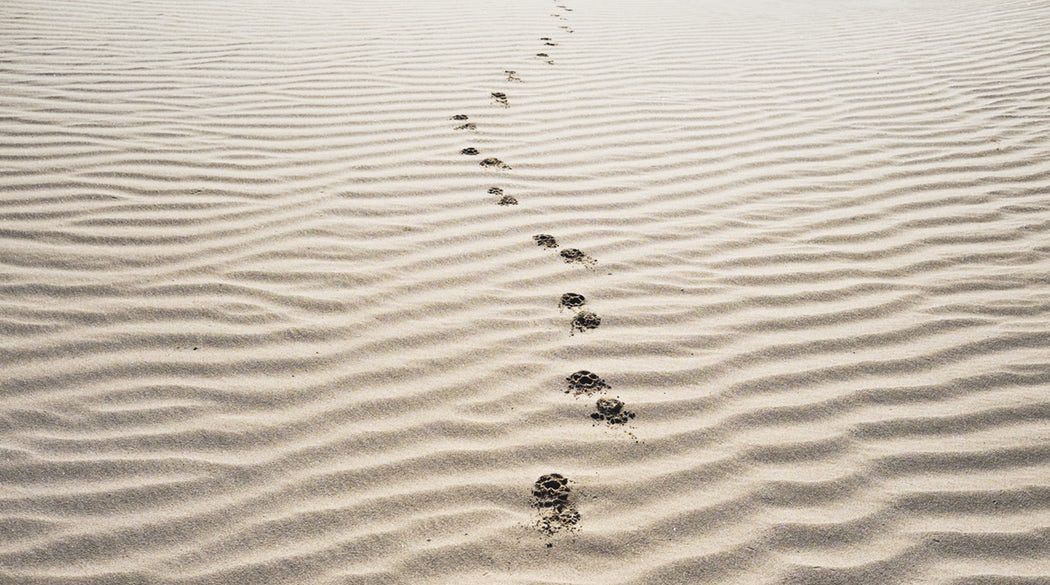Our best tips for reading animal tracks

To identify and interpret different animal tracks you don’t have be a professional animal tracker. In fact, anybody can learn the skills of animal tracking quite easily. Having this skill will enable you to avoid predators and help you find prey if needed. It’s an essential survival skill that will keep you alive for either of these two reasons. Here are a few tips that will teach you how to be a good animal tracker.
Best period for tracking
The best time of the day to track animals is either early in the morning or the evening. The reason for this is that it’s harder to spot the tracks when the sun is out, but when the light is dimmer, they can be spotted more easily. Also, animals usually tend to rest under shade and cover during the day and are more active in the mornings and evenings. Therefore, the tracks that you find during the morning and evenings are more likely to be fresh.
Where to look for tracks

In the wild, there are many places where you have a greater chance of finding animal tracks. The most common are the game trails and trails that lead to water. When you walk on a game trail, make sure you look for additional signs, like flat vegetation, droppings, signs of feeding, and any smells from scent markings. If you cannot find a game trail, look for areas where tracks would be more visible, like in the mud or snow.
How to read the tracks
Knowing when and where to track, you should probably have a high chance of being able to locate the tracks. Once you’ve located them, it’s time to read the tracks and determine the type and the number of animals that are around, in which direction are they headed, and how fresh the tracks are.
Types and sizes of animal tracks

- Every animal has a unique print, so if you know the essential animal tracks, you should be able to tell the kind of animal or identify the specific animal. For example, tracks of elk, moose, and deer are very different from the ones of wolves and coyotes. Make sure you have a book or field guide with animal tracks in your survival kit so that you can compare the tracks with the ones in the book.
- To identify the print, pay attention to the size of it so that you can get an idea of of the size of the animal. If you notice many tracks close to each other that look similar but with different sizes, it’s probably a sign of a mother with her young.
- Also, make sure you count the number of toes on the print, and if there are nail prints available. By the toe print, you will be able to identify if the animals are canine or feline. Animals like bobcats, cougars, and lynxes, are feline, and they can retract their claws, which means they won’t show them on the print. But, animals like wolves, coyotes, and foxes do show their nails.
Tracks pattern

- Once you’ve identified the basic type of animal and the size of the tracks, it’s time to identify the animal precisely. You can do that by looking at the tracks pattern. Not only do they tell you the gait of an animal, but they can also tell you where the animal is heading.
- If the pattern of the tracks is diagonal, it indicates that the animal is walking on all four legs, but it simultaneously lifts the front and rear legs at different sides of the body. In this category are animals such as foxes, elk, deer, moose, coyotes, bobcats, cougars, and wolves.
- If the animal is jumping, the tracks will be in a gallop pattern, which means that the back feet land in front or to the side of the front feet. Tracks with this pattern usually indicate that the animal is in the rabbit family.
- A pacer pattern indicates that the animal is lifting the back and front legs on the same side of the body simultaneously. Beavers, raccoons, and bear fall into this category.
- Bird tracks are the easiest to identify. Their prints land together at the same time, or they can resemble a person’s pattern. If the prints of the two legs are next to each other, it means that the bird flies often, like a robin or sparrow. But, if the patterns are similar to a human’s, it indicates that the bird is spending more time on the ground.
With the help of these tips, you’ll be able to categorize the animal by the weight, size, and the direction it’s traveling in. In the wild, tracks are everywhere around, and we step over them without realizing. When you’re in the wilderness, knowing how to read tracks is crucial to your survival. They can help you stay away from a predator, and lead you towards prey. Good luck.
If you have any comments then please drop us a message on our Outdoor Revival Facebook page
If you have a good story to tell or blog let us know about it on our FB page, we’re also happy for article or review submissions, we’d love to hear from you.
We live in a beautiful world, get out there and enjoy it. Outdoor Revival – Reconnecting us all with the Outdoors.
